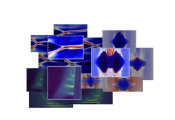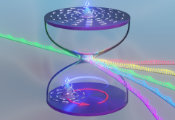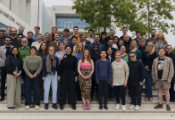Quantum Information Theory Gives New Perspective on Dispersion Forces
September 17, 2025 -- A new study from teams at the University of Oxford's Department of Physics, IBM Research, the University of Hamburg, Planqc and the Flatiron Institute offers a new perspective on the many-body behaviour of dispersion forces: what if we understood these forces not just as fluctuations, but as a flow of quantum information? The study has been published in Physical Review Letters.
Quantum information science is not just a frontier of computation, it's a lens through which we can reimagine the fundamental forces of nature. Van der Waals forces – those subtle, non-covalent attractions between molecules – are ubiquitous. They help geckos climb walls, influence how drugs bind to proteins, and stabilise everything from molecular crystals to cell membranes. These so-called dispersion forces arise from fleeting quantum fluctuations, yet their many-body behaviour remains surprisingly poorly understood.
In their study, the team used quantum Drude oscillators to show that the entanglement between particles directly determines whether interactions in molecular assemblies are attractive, repulsive or merely pairwise. Crucially, they found that how entanglement is distributed depends on a principle known as monogamy: quantum correlations, like attention among people, can’t be freely shared by many particles. This reframes the origins of dispersion forces in terms of quantum information theory.
The work builds a conceptual bridge between chemistry, quantum information, and quantum computing. In quantum computing, entanglement is both a central resource and a technical challenge. Understanding how quantum correlations govern molecular interactions opens new pathways for simulating complex systems, from novel materials to biological macromolecules.
‘By treating dispersion forces as manifestations of quantum information flow, we can better model and predict behaviour in large molecular assemblies,’ comments Christopher Willby who obtained these exciting results during his graduate research. ‘This can potentially transform fields like drug discovery, nanotechnology, and materials science.’
‘This study is a reminder that even the quietest forces in nature – those that operate invisibly and subtly – are governed by the same principles that power quantum computers,’ adds Jason Crain, IBM Research Europe. ‘As we continue to develop scalable quantum systems and hybrid quantum-classical algorithms, we edge closer to a future where quantum information science not only accelerates computation but deepens our understanding of the natural world. Entanglement isn’t just a resource for quantum computing; it’s a principle that shapes the physical world.’




































